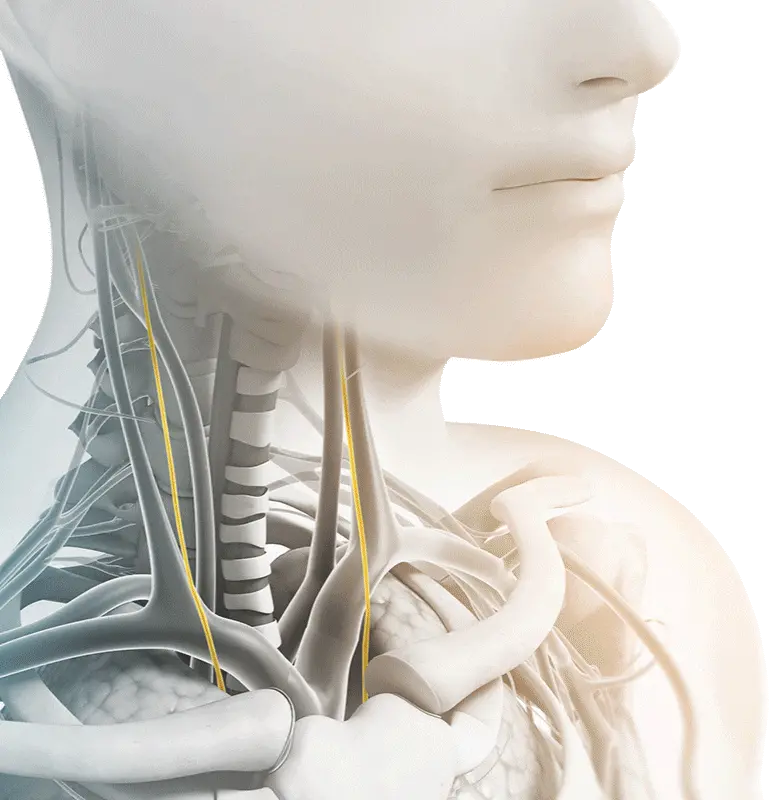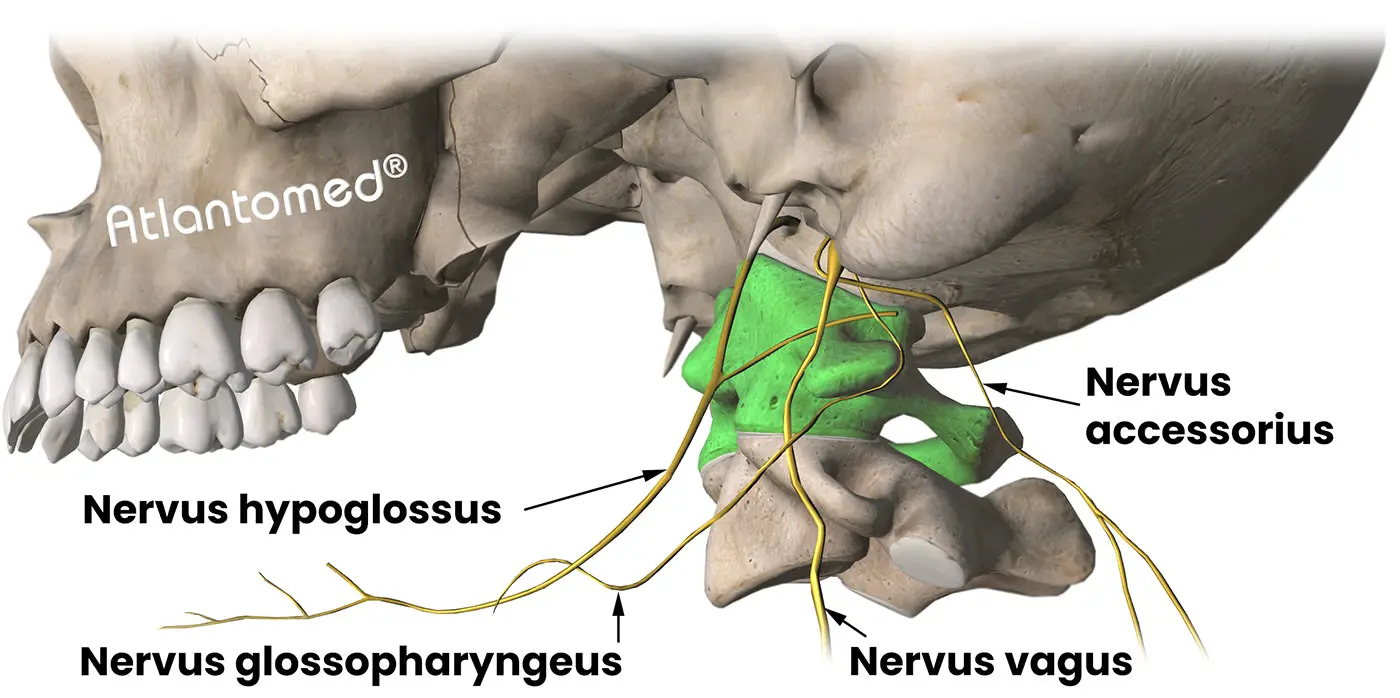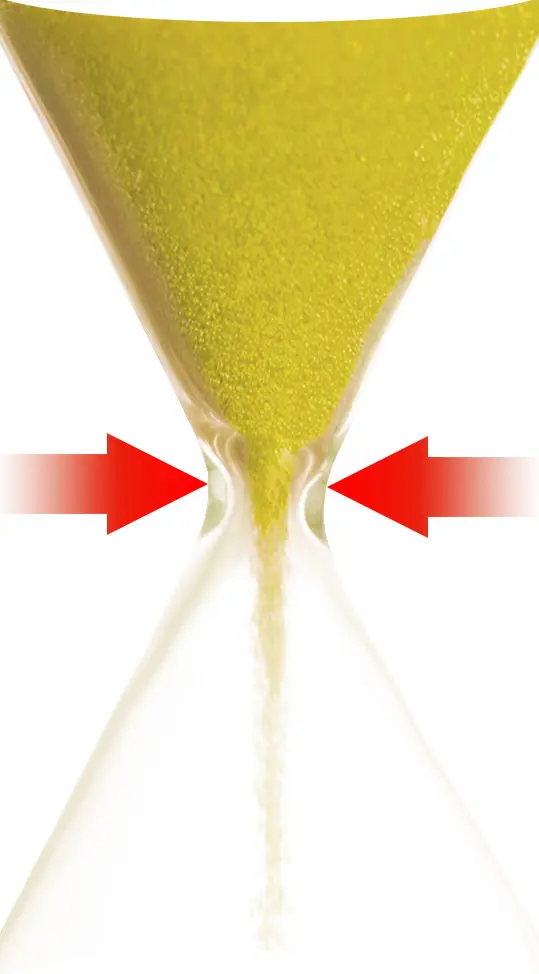Consequences of misaligned Atlas on the nervous system

Gastrointestinal disorders, cardiac arrhythmia, numbness, sensitivity disorders, chronic fatigue, sleep disturbances, dysfunction of the sensory organs - would you ever have thought that a single bone could be the source of all these disorders?
During normal body and head movements, the various vascular, neural and lymphatic structures can be momentarily compressed or stretched.
These stresses are temporary and do not create problems, because the body is predisposed to movement.
On the contrary, the pressure exerted by the misaligned Atlas on the surrounding tissues is constant!
During normal body and head movements, the various vascular, neural and lymphatic structures can be momentarily compressed or stretched.
These stresses are temporary and do not create problems, because the body is predisposed to movement.
On the contrary, the pressure exerted by the misaligned Atlas on the surrounding tissues is constant!
Anatomy of the autonomic nervous system
Around and through the Atlas vertebra, various nerves pass which are part of the nervous system. A total of 12 cranial nerves depart from the brain, distributed in pairs on both sides of the body.One of these is the vagus nerve, also called the tenth cranial nerve. It is the largest, longest and most important nerve of the parasympathetic nervous system (part of the neurovegetative system) and is involved in the regulation of almost all internal organs. The vagus nerve innervates the larynx, pharynx, upper oesophagus, part of the external auditory meatus, heart, lungs, stomach, intestines and even some muscles.
 The accessory nerve, also called the eleventh cranial nerve, is a motor nerve, in other words it regulates muscle activity. Among the various muscles controlled by the accessory nerve are the trapezius (musculus trapezius) and the sternocleidomastoid (musculus sternocleidomastoideus) or SCM.
The accessory nerve, also called the eleventh cranial nerve, is a motor nerve, in other words it regulates muscle activity. Among the various muscles controlled by the accessory nerve are the trapezius (musculus trapezius) and the sternocleidomastoid (musculus sternocleidomastoideus) or SCM.The glossopharyngeal nerve, also called the ninth cranial nerve, is the nerve that carries signals from the back of the tongue to the brain and innervates the muscles of the pharynx. It is important for swallowing and activation of the parotid gland.
The three cranial nerves described above descend from the skull through the jugular foramen, anatomically positioned just in front of the Atlas. It is precisely in this constriction that what is generally disregarded by doctors occurs: the misaligned Atlas exerts pressure on these nerves, triggering symptoms that are inexplicable and incurable for them.
ARTERIA CAROTIDE
NERVO VAGO
VENA GIUGULARE
Some possible effects of Atlas malpositioning on the nervous system

- It can narrow the passage between the vertebral canal and the hole at the base of the skull, reducing the space available for the spinal cord. The flow of electrochemical impulses is disrupted or interrupted.
- It can put pressure on several nerves: glossopharyngeal nerve, vagus nerve, accessory nerve and occipital nerve.
- It can disturb the flow and alter the pressure of cerebrospinal fluid in the spinal canal. This fluid, also called cephalorachidian fluid or simply CSF, has nutritive, protective and cushioning functions for the spinal cord itself.
- It can induce a musculoskeletal imbalance that causes several cervical muscles to harden, which in turn compresses the nerves between the C5, C6 and C7 vertebrae. These nerves innervate the arm and their compression produces numbness in the hands or fingers (paresthesias).
A misaligned Atlas, in addition to the consequences on the autonomic nervous system, can also have negative effects on the peripheral nervous system, such as in the case of peripheral nerve compression syndrome. As a result of particularly hardened muscle chains, certain nerves are compressed in their path. One of the recurring painful phenomena is the compression syndrome of the sciatic nerve. In this case, the contracted piriformis muscle exerts pressure on the sciatic nerve. The result is pain in the area of the buttocks and the back of the legs, also called sciatica.
Would you ever have imagined that such a small misaligned bone upstream could even trigger a neuralgia in the buttocks or a lack of sensitivity in the fingers?
Would you ever have imagined that such a small misaligned bone upstream could even trigger a neuralgia in the buttocks or a lack of sensitivity in the fingers?
Videointerviste disturbi del sistema nervoso
racconti dopo il riallineamento dell'Atlante
What people say about us
The only ones with over 9000 testimonials and reviews in several languages! Click to access the related platforms and read many opinions, feedbacks, experiences and testimonials after the Atlantomed vibro-resonance Atlas correction. Be wary of imitations.
Letteratura scientifica

- Craniocervical Junction Syndrome.
- The Role of the Craniocervical Junction in Craniospinal Hydrodynamics.
- The neurophysiological effects of a single session of spinal joint mobilization.
- The lateral atlanto-axial joint as a source of headache.
- Atlantoaxial Junctions and the Effect of Misalignment on Cerebrospinal Fluid.
- Important contributor to human cerebrospinal fluid circulation.
- Vertebral artery blood flow changes associated with cervical spine rotation.
- Collateral Circulation in Chronic Cerebrospinal Venous Insufficiency.
- Understanding jugular venous outflow disturbance.
- Morphometric Analysis of Superior Articular Facets of Atlas Vertebra.
Written by: Alfredo Lerro


